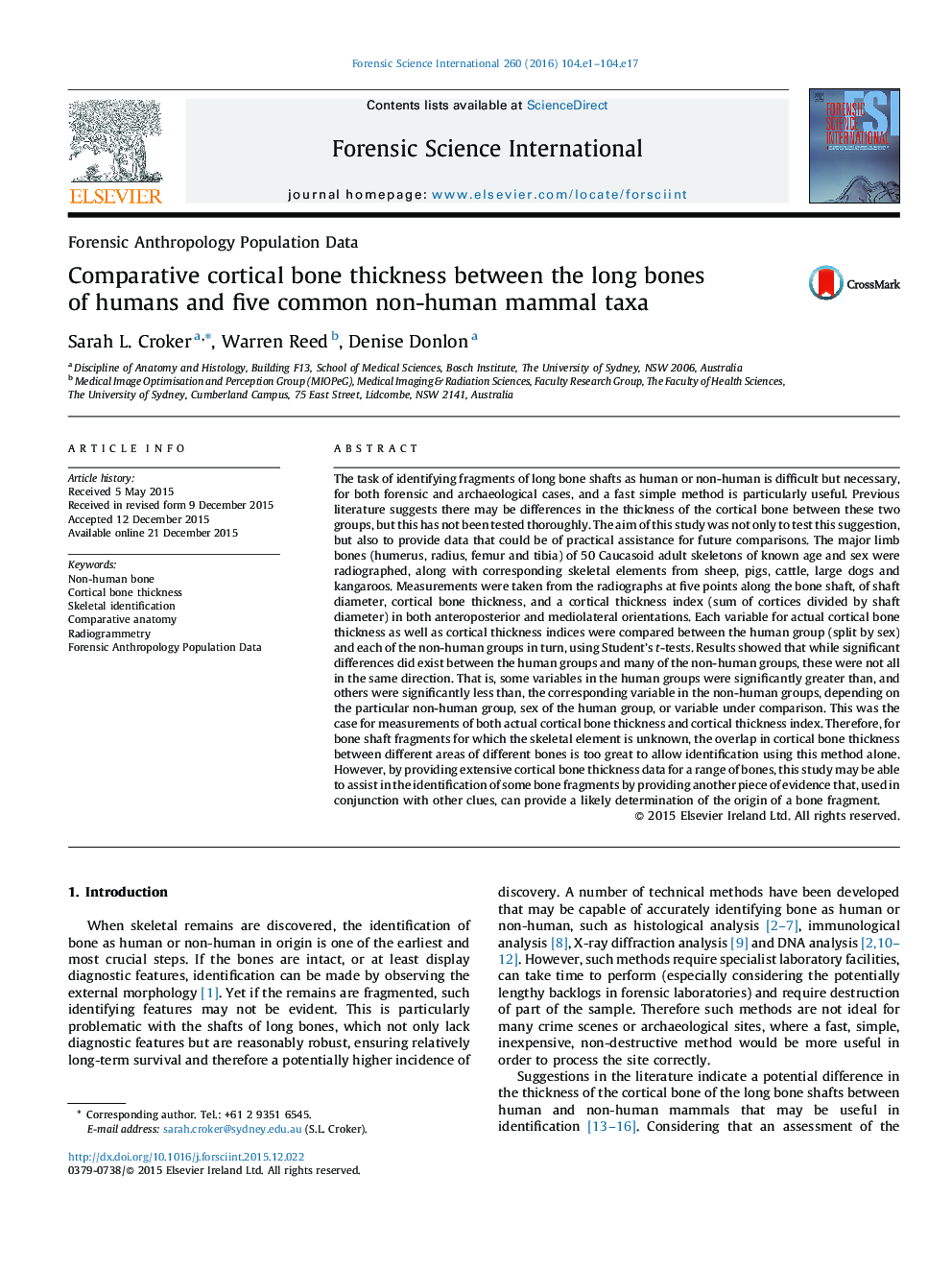| کد مقاله | کد نشریه | سال انتشار | مقاله انگلیسی | نسخه تمام متن |
|---|---|---|---|---|
| 95217 | 160418 | 2016 | 17 صفحه PDF | دانلود رایگان |
عنوان انگلیسی مقاله ISI
Comparative cortical bone thickness between the long bones of humans and five common non-human mammal taxa
ترجمه فارسی عنوان
ضریب همبستگی استخوانها بین استخوانهای طولانی انسان و پنج تاکسون پستانداران غیر انسانی
دانلود مقاله + سفارش ترجمه
دانلود مقاله ISI انگلیسی
رایگان برای ایرانیان
کلمات کلیدی
استخوان غیر انسانی، ضخامت استخوان کورتیک، شناسایی اسکلت، آناتومی تطبیقی، رادیوگراممتری، داده های جمعیت انسان شناسی قانونی،
موضوعات مرتبط
مهندسی و علوم پایه
شیمی
شیمی آنالیزی یا شیمی تجزیه
چکیده انگلیسی
The task of identifying fragments of long bone shafts as human or non-human is difficult but necessary, for both forensic and archaeological cases, and a fast simple method is particularly useful. Previous literature suggests there may be differences in the thickness of the cortical bone between these two groups, but this has not been tested thoroughly. The aim of this study was not only to test this suggestion, but also to provide data that could be of practical assistance for future comparisons. The major limb bones (humerus, radius, femur and tibia) of 50 Caucasoid adult skeletons of known age and sex were radiographed, along with corresponding skeletal elements from sheep, pigs, cattle, large dogs and kangaroos. Measurements were taken from the radiographs at five points along the bone shaft, of shaft diameter, cortical bone thickness, and a cortical thickness index (sum of cortices divided by shaft diameter) in both anteroposterior and mediolateral orientations. Each variable for actual cortical bone thickness as well as cortical thickness indices were compared between the human group (split by sex) and each of the non-human groups in turn, using Student's t-tests. Results showed that while significant differences did exist between the human groups and many of the non-human groups, these were not all in the same direction. That is, some variables in the human groups were significantly greater than, and others were significantly less than, the corresponding variable in the non-human groups, depending on the particular non-human group, sex of the human group, or variable under comparison. This was the case for measurements of both actual cortical bone thickness and cortical thickness index. Therefore, for bone shaft fragments for which the skeletal element is unknown, the overlap in cortical bone thickness between different areas of different bones is too great to allow identification using this method alone. However, by providing extensive cortical bone thickness data for a range of bones, this study may be able to assist in the identification of some bone fragments by providing another piece of evidence that, used in conjunction with other clues, can provide a likely determination of the origin of a bone fragment.
ناشر
Database: Elsevier - ScienceDirect (ساینس دایرکت)
Journal: Forensic Science International - Volume 260, March 2016, Pages 104.e1-104.e17
Journal: Forensic Science International - Volume 260, March 2016, Pages 104.e1-104.e17
نویسندگان
Sarah L. Croker, Warren Reed, Denise Donlon,
